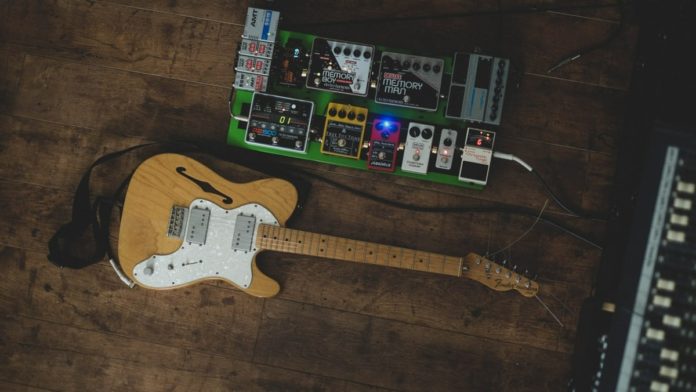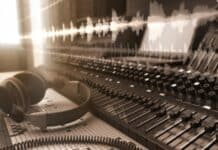
In ‘A Guide on How to Replace Your Guitar Strings’, we discussed how changing your guitar strings can help you get better sound quality.
But what if you want your guitar to make a specific tone or sound like synths? Pedal effects are the way to go.
Even before the Minimoog came into the picture in 1970, guitarists have been using pedals — or stompboxes — to achieve their desired sound. In fact, despite the constant evolution of music technology, new stompboxes continue to flood the market. But for many musicians, it seems like old-school pedals still work best.
Types of Guitar Pedals
Guitar effect pedals were commonplace on the floor of bedrooms, garages, and stages during the ’60s. These stompboxes have become synonymous with particular types of music as much as certain amplifiers have. Pedals are the easiest and quickest way to switch to a new genre or tone, so let’s take a look at some common pedal types
Delay:
A delay pedal creates specific echo repetitions of what you play, filling in space and creating resonances. When the time or feedback of the delay effect changes, you get some interesting resonances; this is why delay is versatile enough to be used for genres like country, jazz, metal, post-rock and ambient guitar music.
You might think that’s impossible to create an EDM sound without synths, but even the Moog brand — named after Robert Moog, who invented the synthesizer — eventually branched out to guitar pedals, and electronic music producers found these stompboxes to be game-changers in their own right. Today, the MF-104 M Analog Delay is an EDM classic, and can help you modulate your delay trails beautifully.
Reverb:
Reverb makes your music sound dreamy, distant, and ambient by creating a sonic space around your notes. The sound lingers long after it occurs, like many successive echoes put closely together, so it feels like playing in a large, empty room with great acoustics. While there are many reverb types such as hall, room, spring, plate, and chamber, most reverb pedals are digital and emulated using a software program running on a processing chip.
Distortion:
Distortion is called a number of things: boost, overdrive, dirt, crunch, or fuzz to name a few. This guitar pedal makes you sound louder so that the sound “spills out” and creates harmonic distortion, perfect for cranking out rock, metal, or even the blues. Depending on your gear, distortion can make a difference to synth tunes as well.
Kurt Cobain used a Boss distortion pedal for Nirvana’s iconic Nevermind album, so this really is a must-have if you’re a guitarist looking for a heavier, grunge sound.
Looper:
With just one guitar, a looper pedal can make you sound like you have a team of guitarists behind you, building and layering tracks on top of each other. Looper pedals work well with ambient guitars, beat guiding riffs, and EDM tones because it pulls everything together to give depth to the swells, spaces, and layers of music.
Tap the pedal to activate it then play a measure of music. Once you tap the pedal again, it will indefinitely play what you’re recorded as a seamless loop for layering.
Filter:
The filter pedal takes the guitar tone and enhances it by adding, reducing, or removing some frequencies from the audio for an otherworldly, vocal-esque sound. Jimi Hendrix popularized the ‘wah’ using Vox filter pedals on songs like “Voodoo Child”. Envelope filters change the sound with additional processing like an equalizer on the stereo, which is why they’re great to use with the funk genre.









